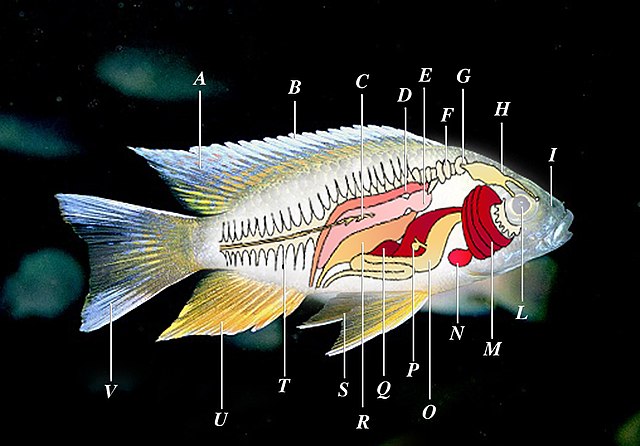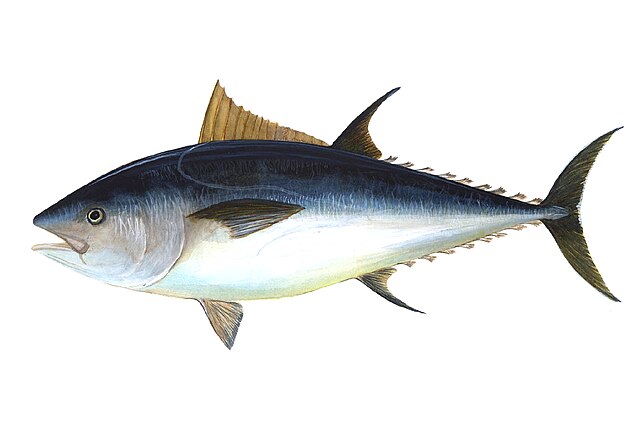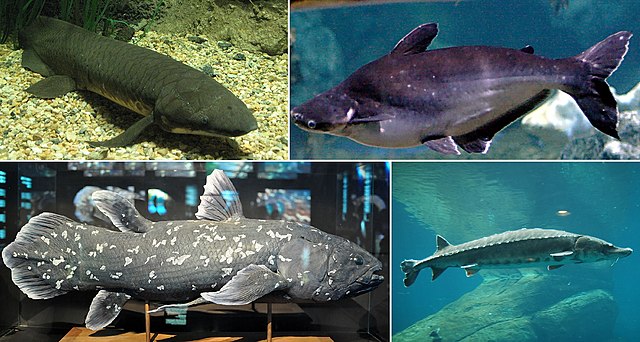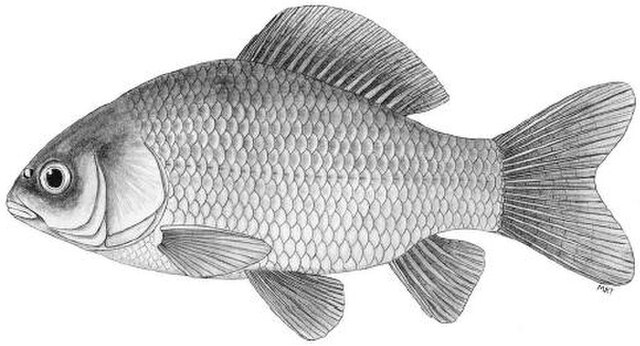Actinopterygii, members of which are known as ray-finned fish or actinopterygians, is a class of bony fish that comprise over 50% of living vertebrate species. They are so called because of their lightly built fins made of webbings of skin supported by radially extended thin bony spines called lepidotrichia, as opposed to the bulkier, fleshy lobed fins of the sister class Sarcopterygii. Resembling folding fans, the actinopterygian fins can easily change shape and wetted area, providing superior thrust-to-weight ratios per movement compared to sarcopterygian and chondrichthyian fins. The fin rays attach directly to the proximal or basal skeletal elements, the radials, which represent the articulation between these fins and the internal skeleton.
Actinopterygii
Anatomy of a typical ray-finned fish (cichlid) A: dorsal fin, B: fin rays, C: lateral line, D: kidney, E: swim bladder, F: Weberian apparatus, G: inner ear, H: brain, I: nostrils, L: eye, M: gills, N: heart, O: stomach, P: gall bladder, Q: spleen, R: internal sex organs (ovaries or testes), S: ventral fins, T: spine, U: anal fin, V: tail (caudal fin). Possible other parts not shown: barbels, adipose fin, external genitalia (gonopodium)
Tuna are streamlined for straight line speed with a deeply forked tail
Cod have three dorsal and two anal fins, which give them great maneuverability
Osteichthyes, also known as osteichthyans or commonly referred to as the bony fish, is a diverse superclass of vertebrate animals that have endoskeletons primarily composed of bone tissue. They can be contrasted with the Chondrichthyes and the extinct placoderms and acanthodians, which have endoskeletons primarily composed of cartilage. The vast majority of extant fish are members of Osteichthyes, being an extremely diverse and abundant group consisting of 45 orders, over 435 families and 28,000 species. It is the largest class of vertebrates in existence today, encompassing most aquatic vertebrates, as well as all semi-aquatic and terrestrial vertebrates.
Osteichthyes
Guiyu oneiros, the earliest known bony fish, lived during the Late Silurian, 425 million years ago. It has a combination of both ray-finned and lobe-finned features.
The ocean sunfish is one of the heaviest bony fish in the world.
Image: Carassius carassius








